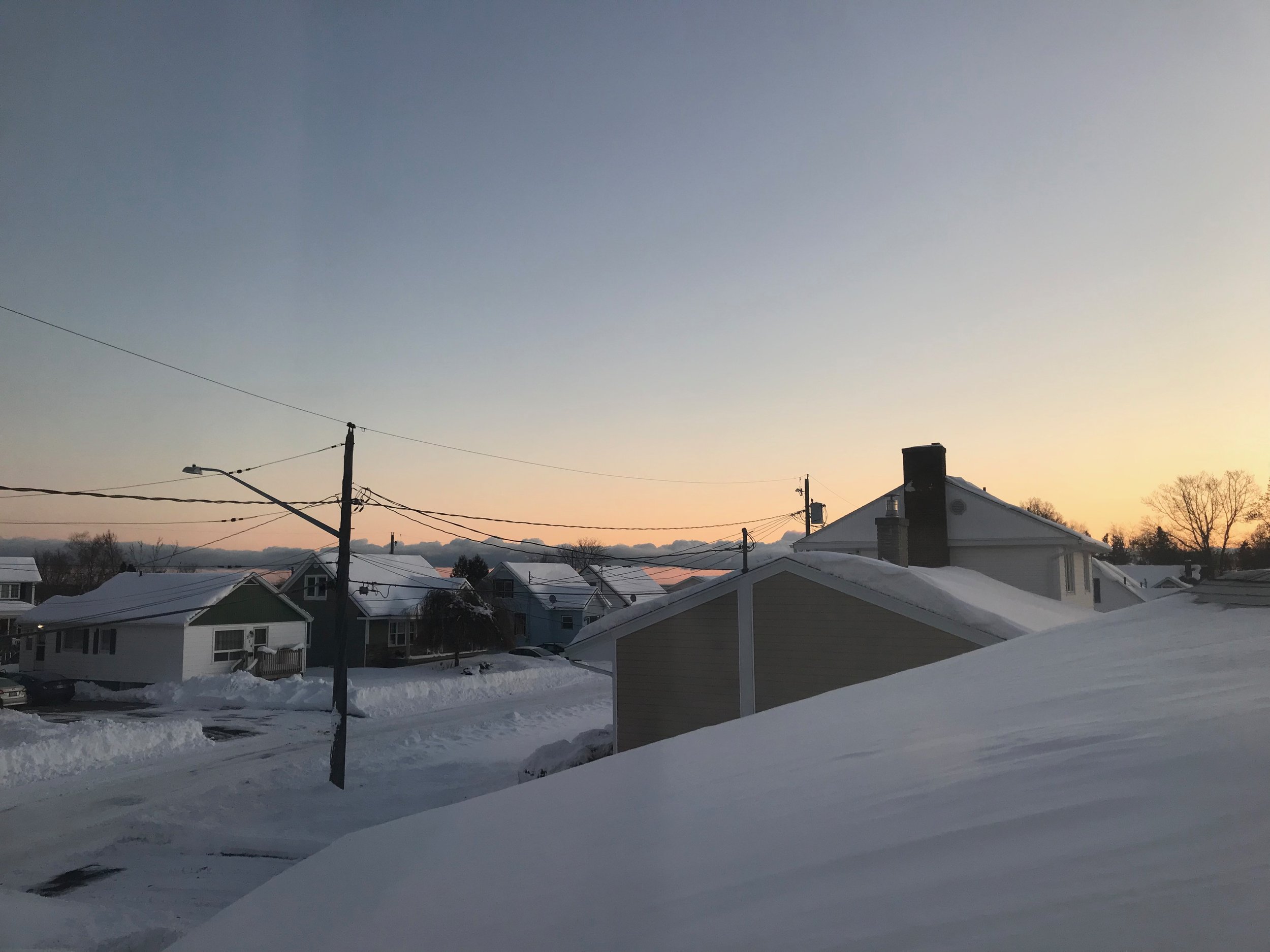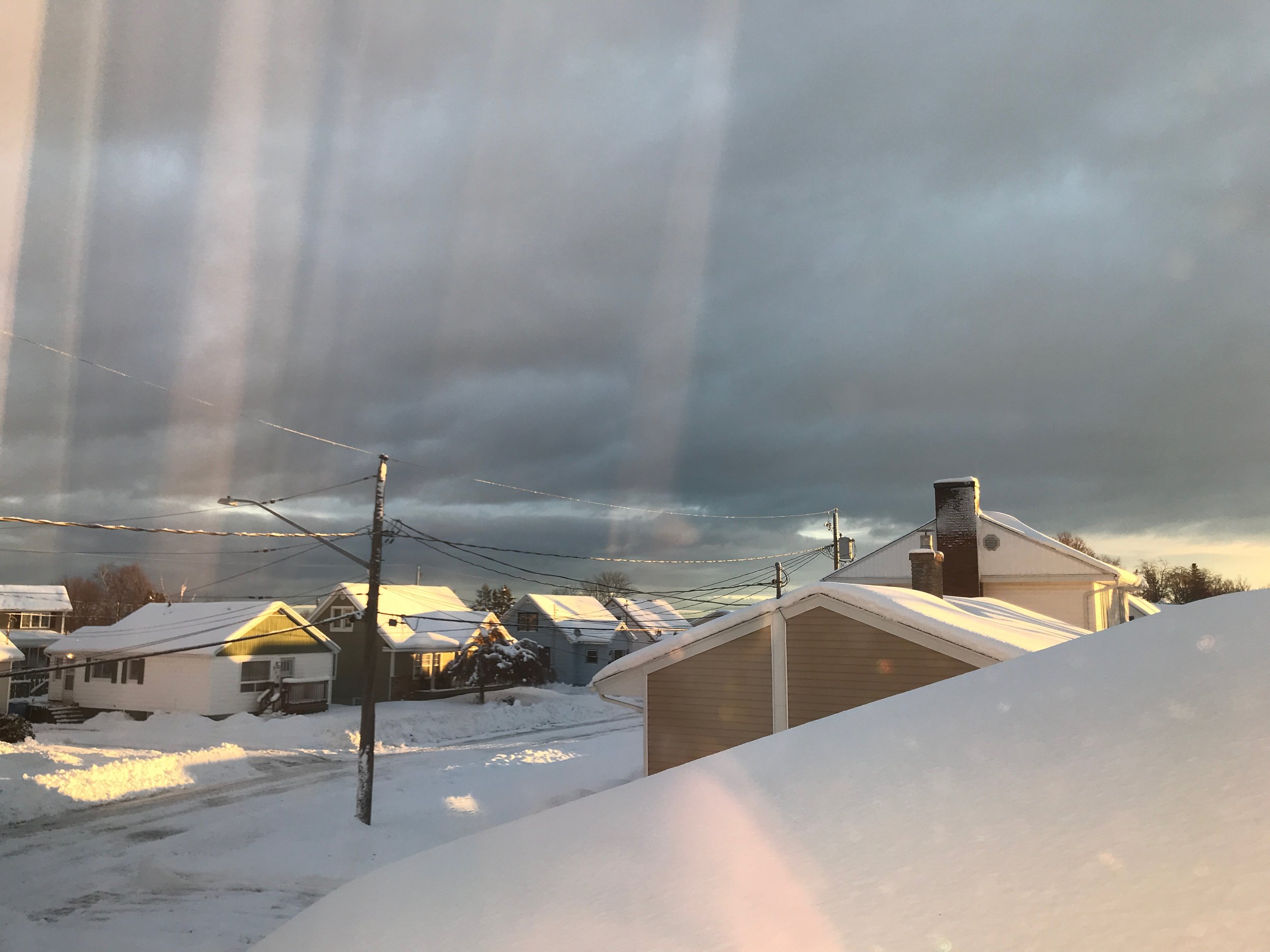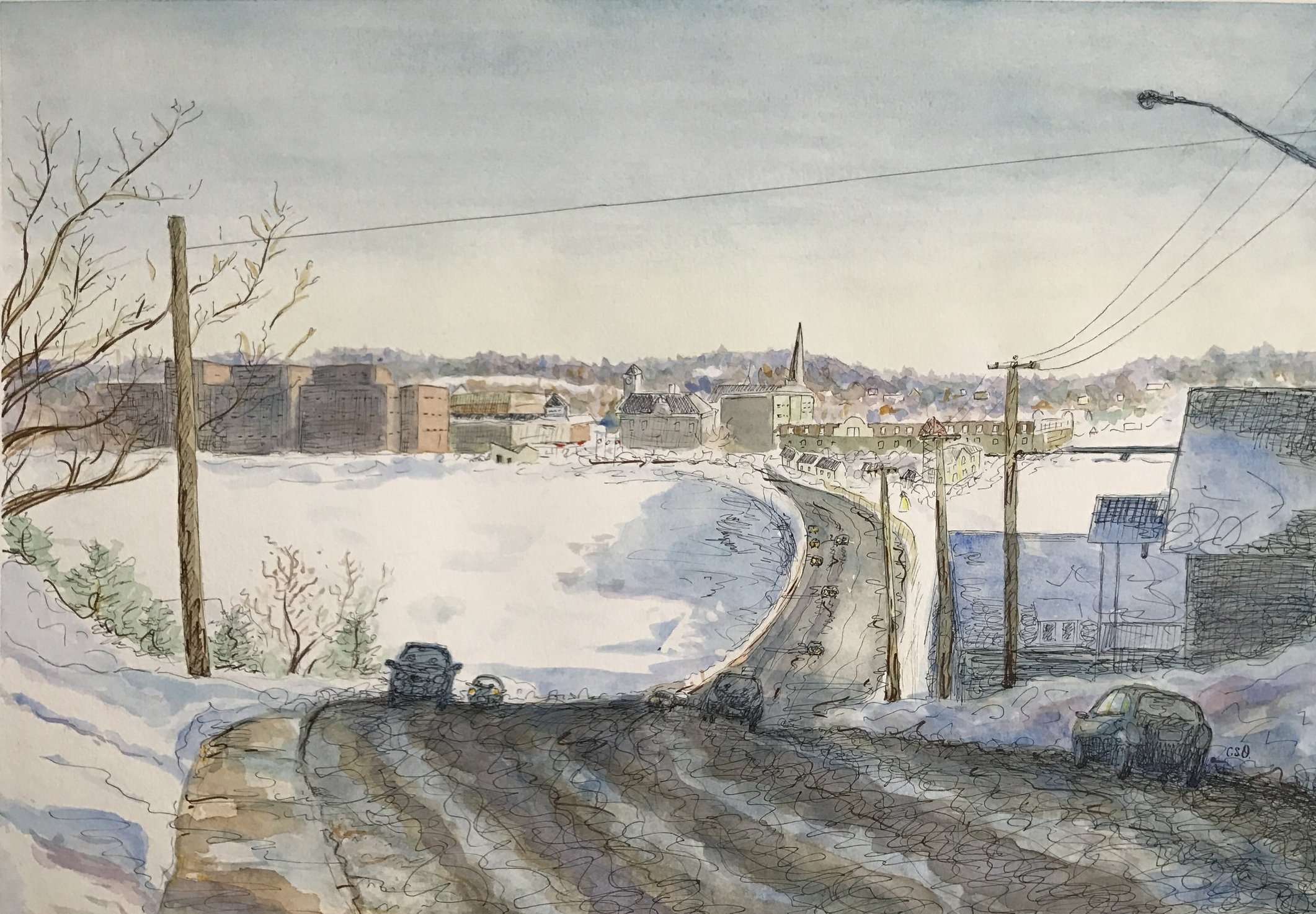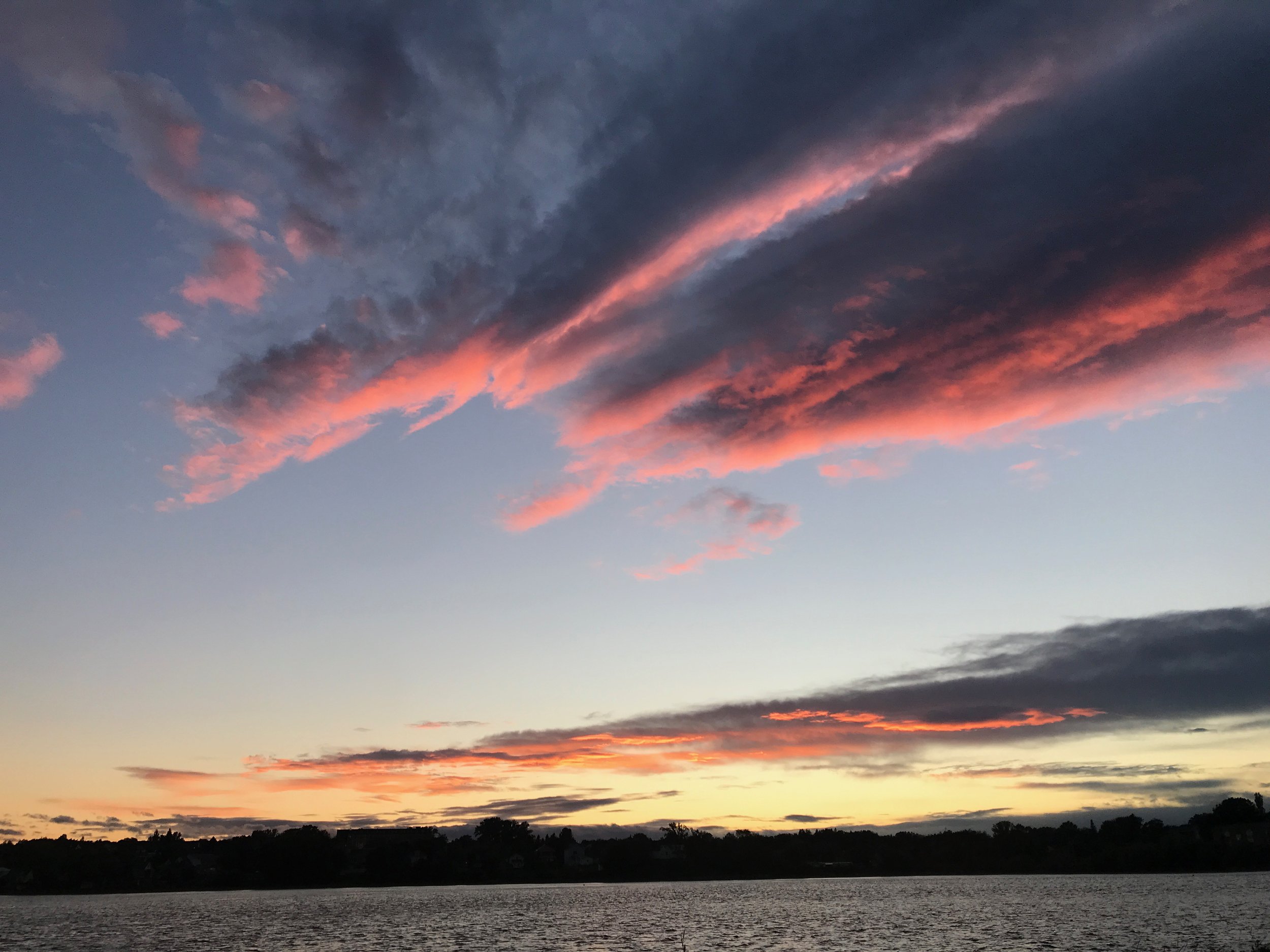(Extra)ordinary Landscapes | Candice Ostroski
“But on this particular day it seemed as if December had remembered that it was time for winter and had turned suddenly dull and brooding, with a windless hush predictive of coming snow. Nevertheless, Anne keenly enjoyed her walk through the grey maze of the beechlands; though alone she never found it lonely…”
A common aspect people find unusual in my work is my choice to portray scenes that most people don’t immediately see beauty in. For example, a muddy thoroughfare in a small town, in the early days of spring. How is it beautiful? Somehow, on my commute home from work, although it’s a path I take every day, I cannot stop looking at it curiously and with amazement, with new eyes. Is it those pastel and muted colours? Or perhaps it is the familiar: a landscape that contains so many stories; scenes in a story storybook for the reality I have spent a lot of time piecing together. For a few years, I felt the need to document the frame from my bathroom window, especially at dawn. Every morning, the colours bouncing over the neighborhood rooftops transported me to any city people have ever described as enchanting.
‘Allison Cres.’ by Candice Ostroski
This is something I have quietly been documenting for years now – through photographs, sketches, and oral stories. Doing this was such a reflex I did not realize it was part of my process until I took a sabbatical from work and found a studio in the heart of downtown Bathurst. I imagined that it would be the opportunity that struck me with inspiration and helped me use that valuable time to be prolific and productive. However, I got there, my body confused after years and months of the corporate rhythm, and I felt a little overwhelmed and lost. I thought I knew what I wanted to do for such a long time. But here I was forgetting everything past, present, and future, and forced to look at it all from the outside in. There was one clear path back to my track, and that was to re-examine years and years of my life and mundane itinerary documented.
A documented small-town, maritime life: Thousands of photos, videos, sketches, and conversations about the scenes I lived every day, most of them 2 km from home. I narrowed it down to 400 photographs I had printed on letter sized paper. I sorted these, organized them by scene, and then colours, and then tacked them along the walls of my studio space. I now realize that I enjoyed the exercise, and it was as good for my heart and soul as the creation that burst out of me for the next few weeks.
“We don’t see things as they are, we see things as we are.”
The quote at the outset is taken from Anne of Avonlea. A figure I was completely enchanted by as I developed the love of reading. As I grew older, I kept asking myself what I was so drawn to, and what I related to about this fictional heroine? Must one be sentimental and nostalgic to love such a place, or can it also be something cerebral and thoughtful? Is it really about the place? There is a saying attributed to Anais Nin: “We don’t see things as they are, we see things as we are.”
There is something very healthy with taking in a world away from the comfort of home. Travel breaks us up from our fears and provides a platform to be new versions of ourselves, if we want, temporarily. Travel breaks routine, challenges boundaries, and forces us out of our comfort zones. The great inspiration I get from traveling has always brought me home thinking about how I could define those properties and locate them in my own backyard.
Who knew that skill would be such an appreciated one before the world was forced into sabbaticals, lockdowns, quarantines, and isolations? Suddenly the skill I developed, of finding inspiration, creativity, and joy, without even leaving home, went from something mysterious and underestimated to something I could share.
Bathurst, New Brunswick
You don’t need to cross the looking glass or rabbit hole. It is simple. Remember that a destination can be anything and anywhere. If you feel stagnant, just take a walk, because nature is ever changing. Nature is an example for us, in that it moves at its own pace, and it adapts. If you feel your world is small and uninteresting – take a walk outside and examine the gradients in the sky, the reflections in the snow, puddles, or bodies of water in your field of view. Look at the lines, shapes, and angles the power lines make. Slow down and look up, look down.
There is bound to be beauty.
‘Flowers spring to blossom where she walks
The careful ways of duty
Our hard, stiff lines of life with her
Are flowing curves of beauty.’
- WHITTIER
Artist, Candice Ostroski
Born and raised in a small city by the sea, the humble and gentle surroundings have always inspired me and influenced my art. First being taken by oil paints, my recent exposure to watercolours have proved a soul satisfying experience; a love that only grows stronger.
In my work, you will find harmonious interest in water and architecture, captured by dreamy washes and illustrative inks. Watercolours allow me to express my fondness for tranquil observation of the world around me, a refreshing breathe of culture and salty air.
Photo by Pascal Chiassonrence.










